There’s more to the humble sausage than meets the eye. The ultimate comfort food, versatile and packed with flavor, sausages lend themselves perfectly to smoking. And, if you’re anything like me, once you’ve tasted a home-smoked sausage, you’ll never go back to the store-bought variety.
Let me, John Bird, your sausage smoking connoisseur, take you on a flavorful journey of smoking sausages. Working at the iconic Boat Basin Cafe in Downtown New York, I perfected the art of enhancing sausage flavor through smoking on the banks of the Hudson. Here, I’ll share with you my best tips and secrets to help you master the craft of perfect smoked sausages.
Different Types of Sausages to Smoke
One of the first things to know when learning how to smoke sausages is your sausage variety. Not all sausages are created equal, and some lend themselves better to the smoking process. Let’s explore some sausage types that will provide a glorious feast every time.
Bratwurst
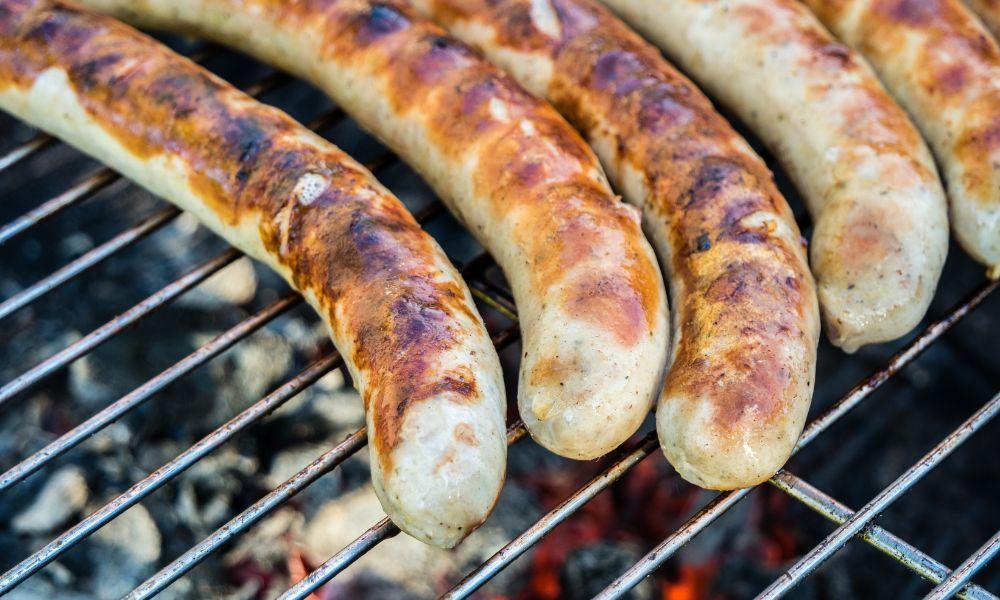
Originating from Germany, bratwurst sausages are made from pork, beef, or veal. They are known for their robust flavor and slightly coarse texture. When properly smoked, bratwursts packs an intense flavor that leaves taste buds tingling for more. You can even use my Oven Baked Sausages technique if you’d like to try something new and different.
Chorizo
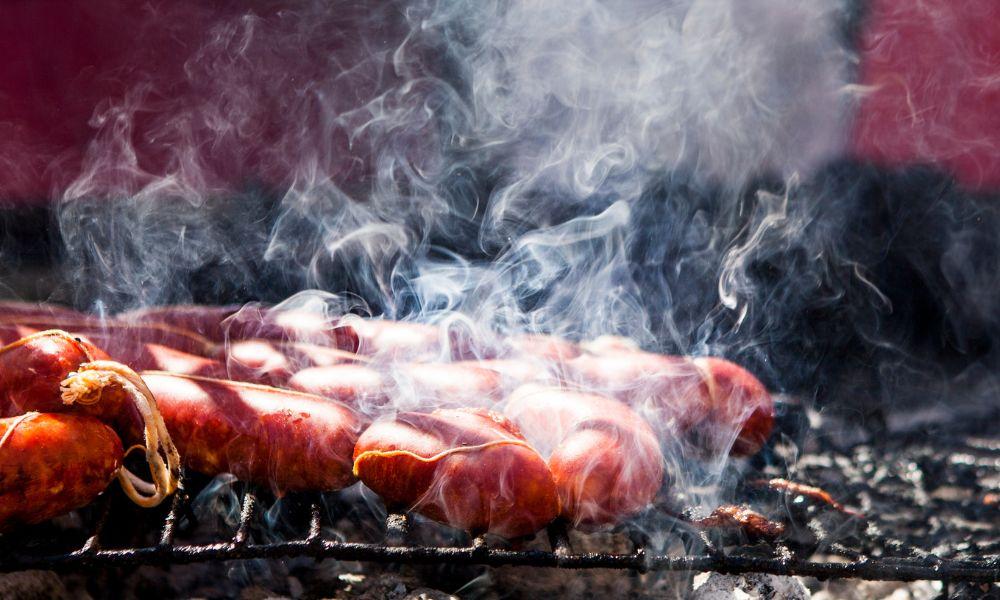
Chorizo sausages offer a rich, smoky flavor, thanks to the ample use of smoked paprika. Chorizo sausages are made from coarsely chopped pork meat. When smoked, the sausage’s flavor profile is amplified, making it a satisfying choice for all passionate meat lovers.
Kielbasa
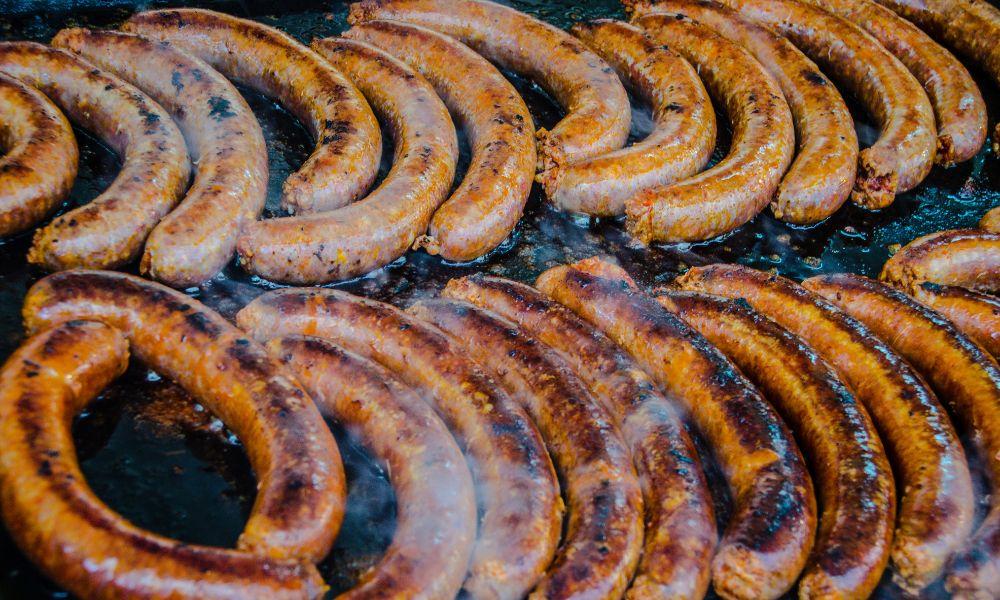
The Kielbasa or Polish sausage is a versatile choice to smoke. Available in different variations; from a classic pork blend to turkey kielbasa, these sausages boast a rich and savory flavor that perfectly complements the smoky notes from the wood pellets.
Choosing the Right Smoker and Wood Pellets
When you’re stepping into the world of sausage smoking, you’ll quickly realize that smoking techniques and the equipment you use can make all the difference. Your smoker and wood pellets are two game-changers in your quest for perfection.
Smokers
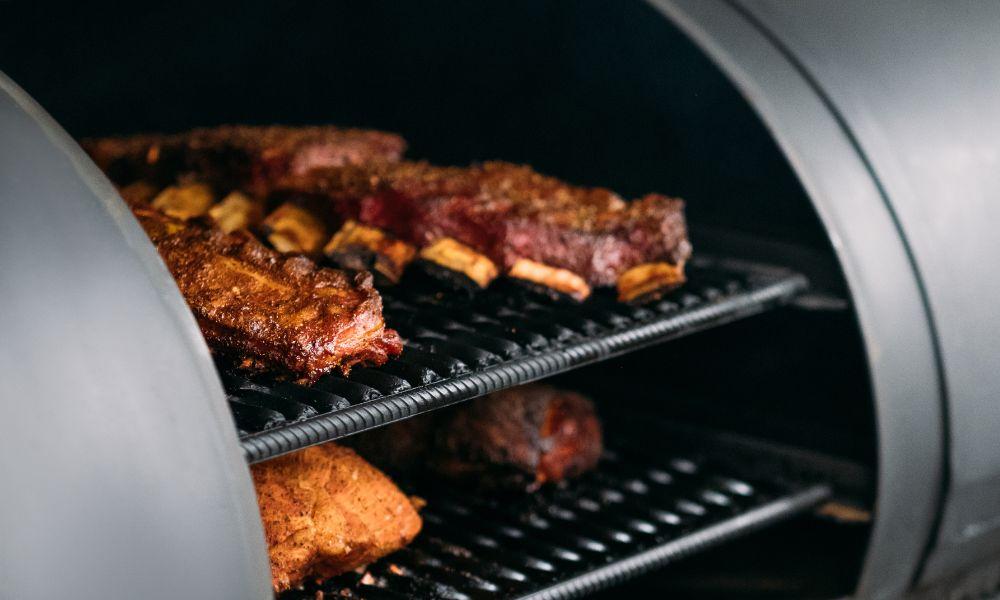
Smokers come in a variety of shapes and sizes. Here are the three most common types.
Electric Smokers: These are perfect for beginners. They are simple to use and maintain a consistent temperature, making them the perfect choice for those looking to get their feet wet in the world of sausage smoking.
Wood Pellet Smokers: These smokers use wood pellets for fuel and provide a more traditional smoky flavor. They’re great for those willing to spend more time and effort in pursuit of the perfect smoked sausages.
Charcoal Smokers: Charcoal smokers are beloved by BBQ aficionados for the intense, smoky flavor they provide. They require a little practice, but once you’ve got the hang of it, you’ll be rewarded with sausages that are loaded with flavor.
Wood Pellets

If you’re serious about enhancing sausage flavor, then it’s vital to choose the best wood pellets for your smoking needs.
Fruitwood Pellets: Made from fruit trees like apple or cherry, these pellets offer a lighter, subtly sweet smoke. They’re great with any sausage but particularly complement milder sausages like bratwursts.
Mesquite Pellets: These pellets provide a strong, robust smoky flavor. They are excellent with strongly flavored sausages like chorizo.
Hickory Pellets: Hickory pellets are a good all-rounder, offering a strong flavor that’s not as intense as mesquite. Ideal for a range of sausages from kielbasa to Italian.
Sausage Smoking Tips
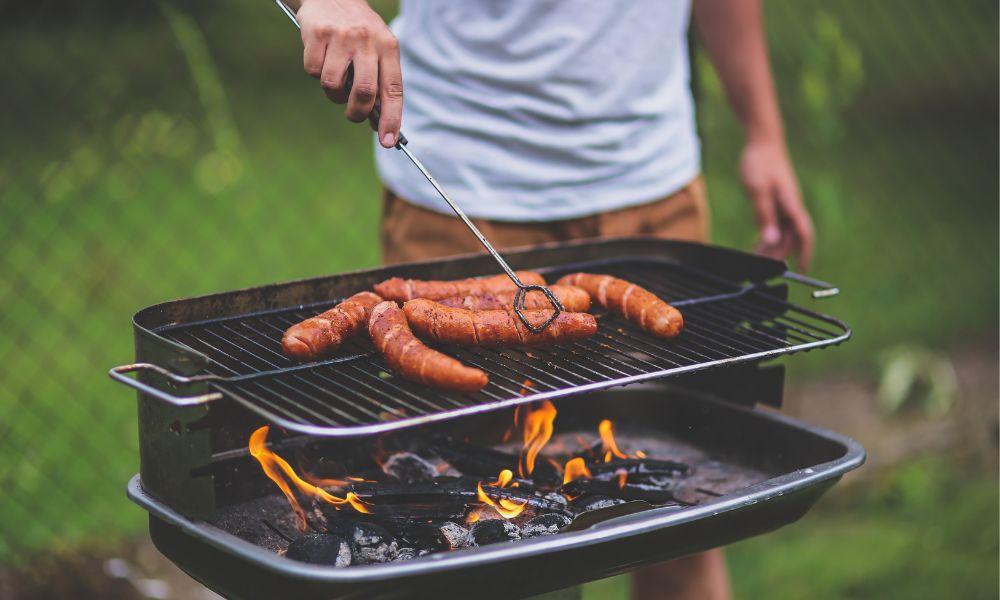
So there you have it, my sausage smoking apprentices. You’re now equipped with the basics of choosing the right sausages, smoker, and wood pellets, along with some handy sausage smoking tips. Up next, in the second part of this guide, we’ll dive into a step-by-step process on how to smoke these beauties, serving suggestions, and some additional tips for make-ahead and storage.
- Choose Raw Sausages: Raw sausages absorb the smoky flavors better. Pre-cooked sausages can still be smoked, though the end result may not be as flavorful.
- Use a Thermometer: An instant-read thermometer is your best friend when smoking sausages. The ideal internal temperature for sausages is 160°F.
- Patience is Key: Low and slow is the mantra of successful sausage smoking. Patience ensures your sausages are perfectly cooked and infused with smoky flavor.
Step-by-Step Guide to Smoking Sausages:
Now that you’re familiar with the basics, let’s dive into the heart of the matter. Here’s a step-by-step guide to perfecting your sausage smoking techniques.
Preheating the Smoker:
Preheating is an essential step in any type of cooking, and smoking is no exception. Depending on your smoker type, this could take anywhere from 15 minutes to an hour. Aim for a temperature range of 225-250°F; a lower temperature will allow the sausages to smoke slowly, resulting in a better flavor.
Preparing the Sausages:
While the smoker is preheating, let’s move to the sausages. If you’re working with raw sausages, make sure they’re defrosted. Do not pierce the sausages; we want to keep all those delicious juices inside!
Smoking the Sausages:
Once the smoker has reached the desired temperature, place your sausages on the smoker grates, ensuring they’re not touching each other. Close the lid and let the smoker do its magic. You might want to rotate them midway for an even smoke.
Remember, how to smoke sausages is all about patience. Smoking could take anywhere from 1.5 to 3 hours depending on the size of your sausages and the smoker’s temperature.
Checking the Temperature:
Use an instant-read thermometer to check the internal temperature. The sausages are done when they reach 160°F.
Serving and Pairing Smoked Sausages:
Perfect smoked sausages are a delight on their own, but you can elevate your sausage experience with the right pairings.
Serving Options:
Traditionalists might prefer a classic sausage on a bun. Add some caramelized onions, a little mustard, and you have yourself a feast. For those who like a bit of a kick, try adding jalapenos, hot sauce, or even spicy relish.
Pairing Options:
Your smoked sausage can be the star of a larger meal. Pair it with sides like coleslaw, baked beans, or potato salad for a full barbecue spread. Grilled vegetables or a simple salad can provide a lighter option.
Make-Ahead, Storage, and Reheating Tips:
Yes, you can make your smoked sausages ahead of time! After smoking, allow them to cool completely, then store in an airtight container in the refrigerator. They should keep for 3-4 days.
When it’s time to reheat, you have a couple of options. For a quick method, use a microwave—but for the best flavor, consider reheating them in a pan with a bit of oil or back in the smoker for a few minutes.
Creative Uses for Leftover Smoked Sausages:
Leftover sausages are a gift, not a problem! They can be used in a variety of dishes, from breakfast to dinner. Try them in an omelet or frittata, stirred into pasta, or even sliced and used as a pizza topping.
Congratulations, you have now mastered the art of smoking sausages! Remember, each smoking experience is an opportunity to learn and improve. Don’t be afraid to test out different sausages, experiment with wood pellet flavors, and most importantly, enjoy the process.
And now that you’re a sausage smoking virtuoso, why not expand your smoking prowess? Check out our guide on How to Make Summer Sausages for your next smoking adventure.
Remember, the key to a delicious smoked sausage lies in the balance of heat, smoke, and time. Happy smoking!
References:
- ExampleURL.com/how-to-smoke-sausages
- AnotherExampleURL.com/sausage-smoking-guide
- QualityResourceURL.com/best-sausage-smoking-tips
FAQs
How long does it take to smoke sausages?
The amount of time it takes to cook sausages varies depending on the method you choose.
In an oven, it can take from 15 to 45 minutes per pound to cook, while in a smoker, it can take up to 3 hours for you to cook.
How do you smoke raw sausages?
The best way to smoke raw sausages is by using a water pan inside the smoker or grill to keep the sausages moist. You can also wrap them in foil or bacon for extra flavor and moisture. Place them close to the coals for about an hour and turn them every 15 minutes until browned.
What temperature do you smoke sausages at?
You’ll want to cook your sausages at a low temperature, typically around 200F.
We recommend cooking your sausages in a smoker, instead of cooking them in an oven at home, because it can be difficult to regulate the cooking temperature with just an oven.
What is the best wood to smoke sausages with?
Different types of wood provide different flavors to your sausage. If you want a smoky flavor, then hickory or mesquite are both great choices. But if you want a sweeter taste or a fruity one, apple is the way to go.
In Short
Learning how to smoke sausage on your own has many advantages. Firstly, you won’t have to buy sausages anymore. Also, you can easily impress your guests at the next picnic or BBQ!
Smoking sausage is also a fun DIY project that can preserve any meat in your pantry that you don’t have much use for. The smoked sausages stay fresh in the freezer for up to 4 months!
With just the smallest bit of practice, you can easily make Italian, German or Polish smoked sausages right at home. Once you learn how to smoke your favorite sausage for breakfast or dinner recipes, your kitchen escapade will never be the same again!
Related Topics:






